Building the Foundation: Why Nutrition Matters in Your 20s
Navigating life in your 20s is an exciting yet complex journey. As independence, career choices, and lifestyle habits take root, so do the decisions that shape your long-term health. Establishing a healthy diet for women in 20s is not just about aesthetics or short-term wellness; it is the cornerstone of disease prevention, hormonal balance, fertility health, and metabolic resilience. The choices made during this critical decade echo into the years ahead, influencing bone density, cardiovascular function, mental clarity, and reproductive health.
The 20s are marked by both biological robustness and unique nutritional vulnerabilities. Young women experience shifting hormonal patterns, irregular eating schedules, and increasing exposure to processed foods and environmental stressors. These factors, compounded by the demands of academic life, early careers, and social pressure, create a perfect storm for nutritional imbalance. Understanding and implementing sound dietary principles can turn this phase into an opportunity for nutritional empowerment. This article offers a comprehensive exploration of 10 essential nutrition rules specifically tailored to help women in their 20s develop sustainable, science-backed eating habits that align with both their immediate and lifelong health goals.
You may also like: 10 Essential Tips on Choosing Healthy Food for Ladies to Boost Energy and Wellness
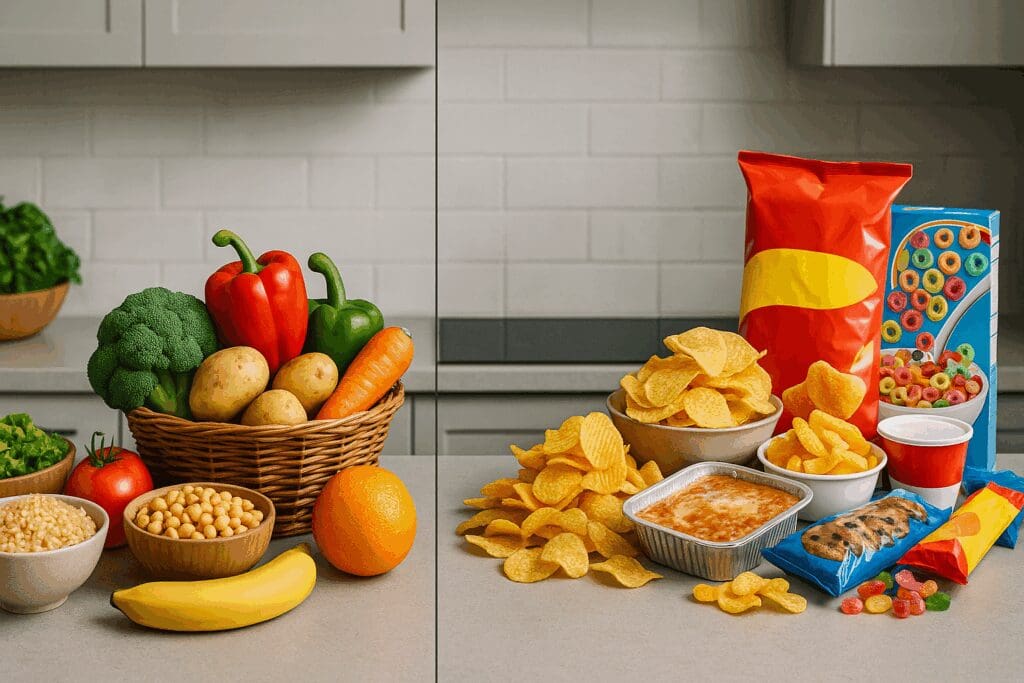
Prioritize Whole Foods Over Processed Products
Whole foods provide the most unadulterated source of nutrients. These include fruits, vegetables, legumes, whole grains, nuts, seeds, and lean proteins that are rich in fiber, antioxidants, vitamins, and minerals. Unlike their processed counterparts, whole foods undergo minimal alteration, retaining their natural nutritional profile. In contrast, ultra-processed foods are often loaded with refined sugars, trans fats, and sodium, which contribute to inflammation, hormonal dysregulation, and metabolic disorders.
For women in their 20s, relying heavily on convenience meals, energy bars, and pre-packaged snacks can result in frequent energy crashes, mood swings, and nutrient deficiencies. Whole foods help stabilize blood glucose levels, reduce cravings, and support optimal digestion. For instance, swapping sugary cereals for steel-cut oats topped with berries and flaxseeds offers a more nutrient-dense and satisfying breakfast. Prioritizing whole foods also helps cultivate mindful eating patterns, fostering a deeper connection to the source and function of food. Transitioning to a whole-foods-based diet does not require overnight transformation but rather gradual, intentional shifts that collectively create a powerful nutritional framework.
Establish Consistent Eating Patterns and Meal Timing
Your body thrives on consistency. Irregular eating habits, such as skipping meals or eating late at night, disrupt circadian rhythms and impair metabolic regulation. Research indicates that aligning food intake with natural light-dark cycles enhances insulin sensitivity, appetite control, and fat metabolism. Women in their 20s often juggle academic deadlines, job commitments, and social outings, which can lead to erratic meal timing.
Establishing regular meal patterns—such as eating breakfast within an hour of waking and spacing meals every 4-5 hours—can profoundly impact hormonal balance and cognitive performance. For example, a structured meal schedule reduces the likelihood of binge eating or excessive caffeine reliance. Consistent eating also supports adrenal function and minimizes cortisol spikes that contribute to weight gain and fatigue. Building a rhythm that includes three balanced meals and one or two small, nutrient-rich snacks each day is a practical way to support both metabolic health and energy levels.
Meal timing should also be paired with awareness of hunger cues, promoting intuitive eating. Rather than adhering rigidly to clock-based schedules, developing an internal sense of hunger and fullness cultivates a positive relationship with food and reduces the risk of disordered eating patterns.
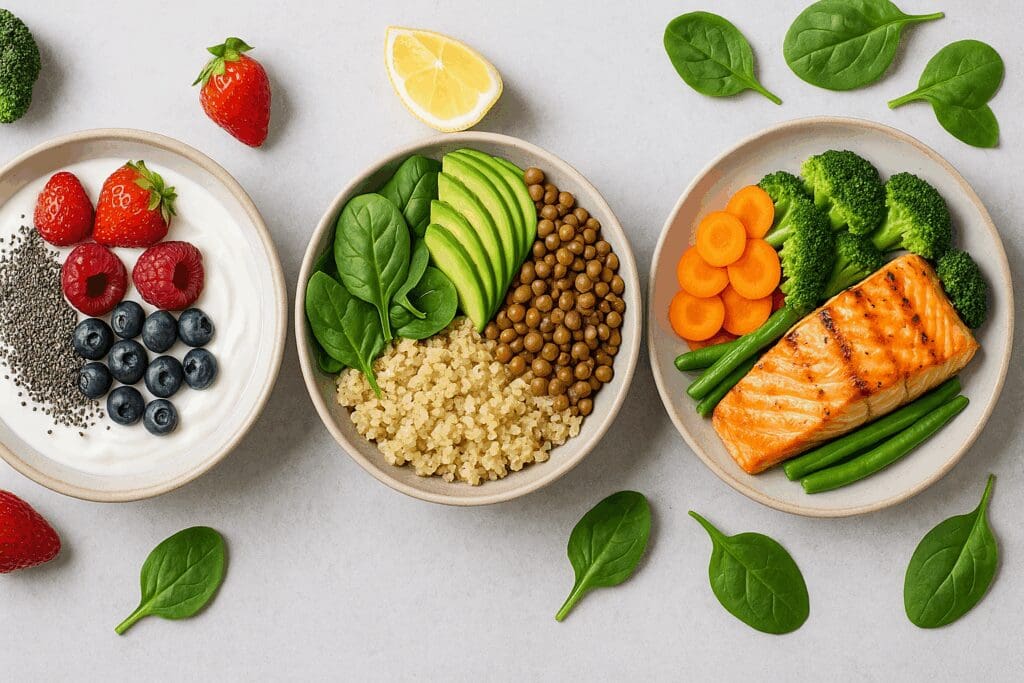
Focus on Protein Quality and Distribution
Protein is the foundational macronutrient for muscle repair, immune resilience, neurotransmitter function, and hormone synthesis. While caloric intake may dominate many diet conversations, protein quantity and quality are often overlooked, especially among young women. Nutrition for women in their 20s should emphasize high-quality protein sources such as legumes, fish, poultry, tofu, dairy, eggs, and quinoa.
The timing and distribution of protein also matter. Rather than consuming the bulk of daily protein at dinner, evenly distributing it across meals improves muscle protein synthesis and stabilizes blood sugar. A breakfast of Greek yogurt with chia seeds, lunch featuring a quinoa and lentil bowl, and a salmon-and-veggie dinner ensures steady amino acid availability throughout the day.
Insufficient protein intake can result in brittle nails, hair loss, reduced immune defenses, and prolonged muscle recovery after exercise. Conversely, excessive reliance on protein powders or meat-heavy meals can increase the burden on the kidneys and miss the diverse nutrients found in plant-based proteins. Striking a balanced approach that includes both animal and plant-based proteins enriches the dietary landscape and supports long-term vitality.
Don’t Skimp on Healthy Fats
The demonization of fats in past decades has left a lingering fear among many young women, but fats are indispensable for hormone production, cognitive health, and cellular integrity. Essential fatty acids, particularly omega-3s found in fatty fish, flaxseed, walnuts, and chia seeds, play a crucial role in mood regulation, inflammation control, and menstrual cycle regulation.
Monounsaturated fats from sources like avocados, olive oil, and almonds improve cardiovascular health and enhance nutrient absorption. These fats help absorb fat-soluble vitamins A, D, E, and K, which are vital for skin health, immune function, and bone maintenance. A healthy diet for women in 20s must include a strategic intake of fats rather than defaulting to low-fat or fat-free products that often compensate with added sugars.
Trans fats and industrial seed oils, however, should be minimized. Found in many packaged snacks, baked goods, and fast foods, these unhealthy fats contribute to systemic inflammation and increase the risk of chronic diseases. Embracing healthy fats as part of a balanced plate not only enriches flavor but also improves satiety and nutrient utilization, encouraging better long-term health decisions.
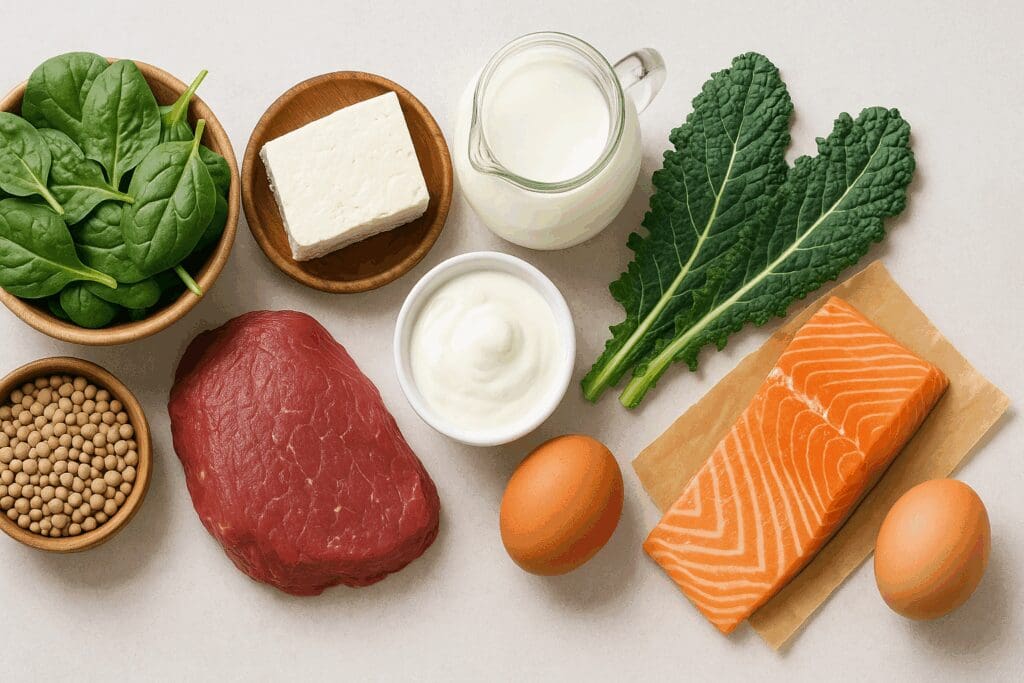
Micronutrients Matter: Iron, Calcium, and Vitamin D
Micronutrients are the silent pillars of health, especially during the pivotal years of the 20s when bone mass peaks and hormonal fluctuations are common. Iron is essential for oxygen transport and energy metabolism. Women are particularly vulnerable to iron deficiency due to menstrual losses, which can lead to fatigue, dizziness, and decreased mental focus. Incorporating iron-rich foods such as lentils, spinach, red meat, and fortified cereals is essential, especially when paired with vitamin C-rich foods to enhance absorption.
Calcium and vitamin D are critical for bone health, as most women attain peak bone mass in their 20s. Low intake during this window increases the risk of osteoporosis and fractures later in life. Dairy products, fortified plant-based milks, leafy greens, and tofu provide calcium, while vitamin D is best synthesized through sunlight exposure and supported by fatty fish, egg yolks, and fortified foods.
Magnesium, zinc, and B vitamins also deserve attention. These nutrients support mood stability, reproductive health, and energy production. A multivitamin may be useful for those with dietary restrictions, but food-based sources are generally preferred for optimal bioavailability. Understanding the role of micronutrients and tailoring food choices accordingly enhances resilience, fertility, and disease prevention for decades to come.
Hydration Is More Than Just Drinking Water
While most people associate hydration with simply drinking more water, the concept is far more nuanced. Total hydration includes electrolyte balance, cellular hydration, and the types of beverages consumed throughout the day. Caffeinated drinks, alcohol, and sugar-laden sodas can act as diuretics or promote dehydration, especially when not counterbalanced with sufficient water intake.
For women in their 20s, hydration impacts skin appearance, cognitive function, digestion, and physical performance. Water-rich foods such as cucumbers, melons, citrus fruits, and soups contribute meaningfully to overall hydration. Additionally, adding a pinch of mineral salt or sipping on electrolyte-rich beverages like coconut water after intense workouts can help replenish sodium and potassium lost through sweat.
Drinking adequate fluids should be habitual rather than reactionary. Sipping water throughout the day, especially before meals, supports satiety and reduces the likelihood of mistaking thirst for hunger. Investing in a reusable water bottle and incorporating hydrating rituals into your routine—such as herbal teas or infused waters—can enhance consistency and enjoyment, making hydration an intentional act of self-care.
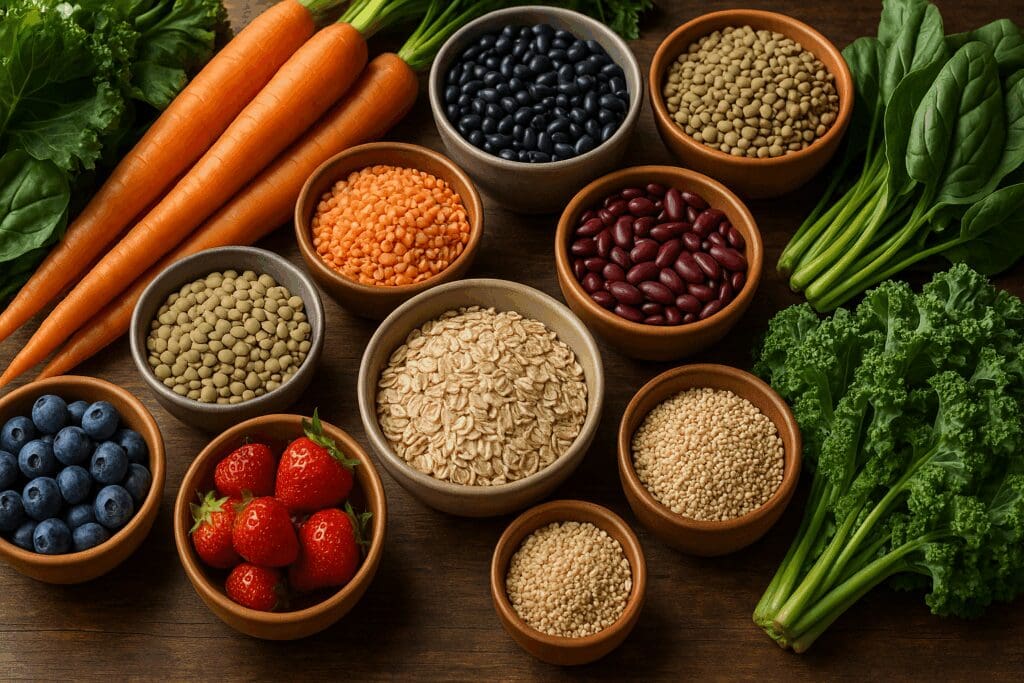
Embrace Fiber-Rich Foods for Gut and Hormonal Health
Fiber is often celebrated for its role in digestive regularity, but its benefits extend far beyond bowel health. Soluble and insoluble fibers play key roles in cholesterol reduction, blood sugar regulation, and hormonal detoxification. The gut microbiome, a complex community of microorganisms in the digestive tract, thrives on diverse fibers found in legumes, fruits, vegetables, and whole grains.
A healthy diet for women in 20s should emphasize at least 25 grams of fiber daily to support microbiome diversity and hormonal balance. Estrogen, once used by the body, is excreted via the digestive tract; insufficient fiber can lead to reabsorption and contribute to hormonal imbalances like acne or irregular periods. Incorporating fiber-rich foods also fosters beneficial bacteria that produce short-chain fatty acids, which strengthen the gut lining and reduce systemic inflammation.
Rather than relying on fiber supplements, integrating a variety of whole plant foods is a more effective and enjoyable strategy. A fiber-rich diet not only nurtures the gut-brain axis but also promotes satiety, making it easier to maintain a healthy body composition without restrictive dieting. Building meals around colorful produce, legumes, and intact grains ensures a steady supply of fiber and phytonutrients essential for long-term wellness.
Learn to Read Nutrition Labels and Ingredient Lists
Empowerment begins with education, and understanding food labels is a crucial step toward informed eating. Many products marketed as “natural” or “healthy” conceal high amounts of added sugars, sodium, or synthetic additives. Learning to interpret serving sizes, daily value percentages, and ingredient order provides valuable insight into the true nutritional quality of packaged foods.
Women in their 20s often face a barrage of marketing tactics aimed at promoting convenience over nourishment. Becoming adept at label reading allows for smarter choices that align with personal health goals. For instance, recognizing different names for sugar (like dextrose, maltose, or cane juice) can prevent unintended overconsumption. Paying attention to ingredient lists also helps identify potential allergens, preservatives, and artificial colors that may contribute to inflammation or digestive distress.
Label literacy promotes a greater sense of control and reduces dependency on fad diets or influencer trends. By demystifying food marketing, women can confidently navigate grocery aisles and select products that genuinely support a healthy lifestyle. Developing this skill early on paves the way for a lifetime of conscious and empowered eating decisions.
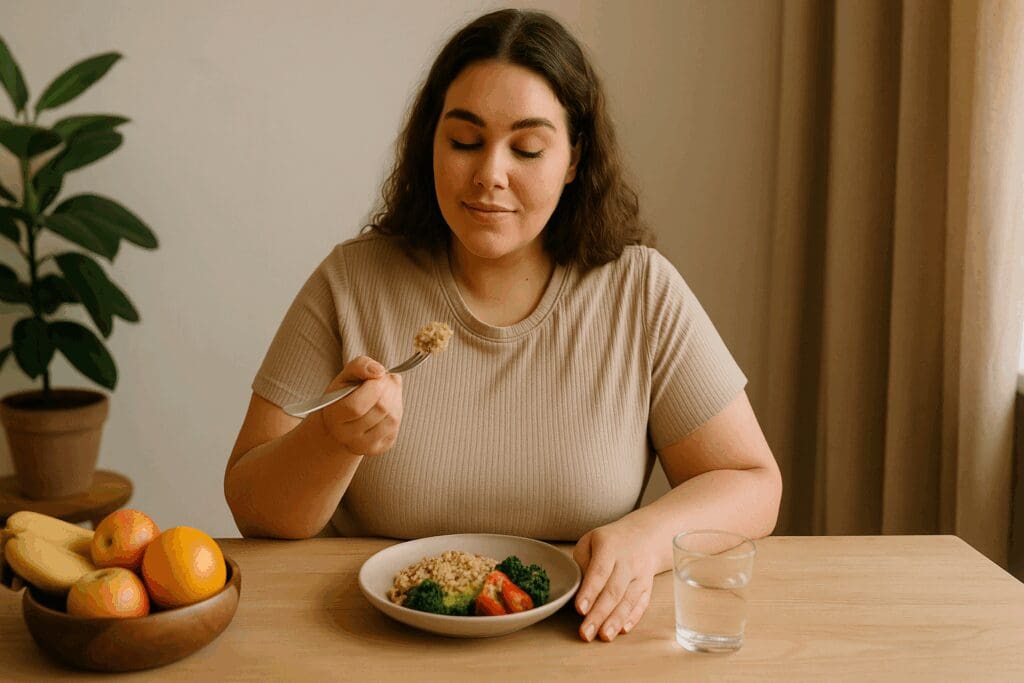
Cultivate a Healthy Relationship with Food and Body Image
Nutrition is as much about mindset as it is about macronutrients. A healthy diet for women in 20s must be rooted in self-compassion, body respect, and emotional awareness. Diet culture, with its rigid rules and unrealistic ideals, can lead to guilt, disordered eating, and chronic dissatisfaction. Reframing food as a source of nourishment and joy rather than a moral battleground transforms the eating experience.
Developing intuitive eating habits—where internal hunger and fullness cues guide food choices—can counteract years of dieting and body criticism. Mindful eating practices, such as savoring meals without distractions and recognizing emotional triggers, foster a more harmonious relationship with food. This approach supports both mental well-being and physical health, reducing the risk of binge eating, restriction cycles, and nutritional imbalances.
Body image also plays a pivotal role. Embracing body diversity and rejecting unrealistic beauty standards nurtures self-esteem and resilience. Nutritional decisions rooted in self-love rather than fear lead to more sustainable and enjoyable habits. Surrounding oneself with positive role models and cultivating media literacy can further reinforce healthy body image and promote long-term mental and physical wellness.

Stay Informed and Flexible as Your Needs Change
The nutritional needs of women in their 20s are not static; they evolve with lifestyle shifts, physical activity, stress levels, and reproductive choices. Staying informed about the latest research and seeking guidance from registered dietitians or healthcare providers ensures that dietary habits remain aligned with individual goals and physiology. Nutritional literacy is not a one-time achievement but an ongoing journey of curiosity and adaptation.
Periods of travel, career transitions, pregnancy planning, or athletic training all necessitate adjustments in caloric intake, micronutrient focus, and supplementation. Rather than adhering to a rigid blueprint, cultivating adaptability allows women to honor their body’s changing needs without judgment or anxiety. Flexibility also means recognizing when certain diets or routines no longer serve your well-being and having the confidence to explore new approaches.
Engaging in reflective practices such as journaling, routine lab testing, or health coaching can enhance self-awareness and provide actionable insights. Ultimately, a truly healthy diet for women in 20s is one that evolves with grace, grounded in both evidence-based principles and intuitive wisdom.
Expert FAQ: Navigating a Healthy Diet for Women in 20s with Practical, Fresh Insights
1. How can women in their 20s align hormonal health with a healthy diet for women in 20s?
Hormonal health in your 20s can be highly responsive to nutrition and lifestyle choices. A healthy diet for women in 20s should emphasize foods rich in magnesium, B vitamins, and omega-3 fatty acids to support optimal hormonal balance—especially during menstruation and high-stress phases. For example, flaxseeds and walnuts offer lignans and alpha-linolenic acid, which can support estrogen modulation. Additionally, cutting back on refined sugars and alcohol helps reduce estrogen dominance and insulin resistance, which are increasingly common in young adult women. These subtle adjustments can improve energy, mood, and even skin clarity, creating a sustainable foundation for long-term reproductive health.
2. What role does gut health play in a healthy diet for women in 20s?
Gut health plays a foundational role in how nutrients are absorbed and how inflammation is regulated—two essential functions for young women. A healthy diet for women in 20s should include prebiotic-rich foods like garlic, onions, and asparagus, alongside probiotics from yogurt, kefir, or fermented vegetables. Emerging research connects a diverse gut microbiome with reduced PMS symptoms, improved mental clarity, and better immune response. Women who suffer from frequent bloating or irregular digestion may benefit from increasing their fiber variety, not just quantity. Prioritizing microbiome diversity early on sets the stage for improved metabolic resilience as women age.
3. How can a woman in her 20s adapt her diet for emotional resilience and cognitive performance?
Nutrition for women isn’t just about physical health—it’s integral to mental sharpness and emotional stability. Choline-rich foods like eggs and salmon support neurotransmitter synthesis and memory, which are vital for young professionals or students. A focus on omega-3s, especially DHA, is linked to lower risk of anxiety and depression, which often peak in the mid-20s. Nutritional psychiatry also emphasizes the mood-regulating effects of folate and zinc, found in lentils and pumpkin seeds. Incorporating mindful eating habits, like eating away from screens and chewing thoroughly, enhances satiety and improves the gut-brain axis—essential for long-term mental well-being.
4. Are there overlooked micronutrients in nutrition for women during their 20s?
Yes—while iron and calcium often get the spotlight, other micronutrients deserve equal attention. Selenium (found in Brazil nuts) supports thyroid function, which regulates metabolism and energy. Vitamin K2, present in fermented foods like natto or certain cheeses, helps direct calcium to bones rather than arteries, improving cardiovascular health. Chromium is another underappreciated nutrient that enhances insulin sensitivity—beneficial for women with PCOS or family history of diabetes. Nutrition for women in their 20s should account for these lesser-known micronutrients, especially as poor habits formed now can create deficiencies later in life. A diversified diet rich in whole, minimally processed foods is the best way to cover these gaps.
5. How does intermittent fasting affect women in their 20s differently than men?
Intermittent fasting (IF) can affect women in their 20s uniquely due to hormonal sensitivity. While some women thrive on IF protocols, others may experience disrupted menstrual cycles or heightened cortisol levels. The key lies in personalization: starting with a 12-hour overnight fast (e.g., 7 PM to 7 AM) rather than aggressive 16:8 windows can be more hormonally friendly. Ensuring meals are nutrient-dense and well-balanced—especially breakfast—can prevent energy crashes and support ovulatory function. A healthy diet for women in 20s should emphasize food quality during eating windows rather than focusing solely on meal timing.
6. What are some effective strategies for maintaining a healthy diet for women in 20s while living a fast-paced lifestyle?
Time constraints are one of the biggest challenges for women in their 20s, especially students or professionals. One effective strategy is to prep versatile ingredients (like quinoa, hard-boiled eggs, or roasted veggies) that can be mixed and matched for quick meals. Smoothies with leafy greens, plant-based protein, and healthy fats like chia seeds make an ideal on-the-go breakfast. Smart snacking—such as keeping almonds or hummus with veggies on hand—can prevent blood sugar dips that lead to fatigue or overeating later. A healthy diet for women in 20s doesn’t require perfection but rather consistency, resourcefulness, and preparation tailored to real-world demands.
7. Can tracking menstrual phases improve nutrition for women and physical performance?
Absolutely. Cycle-syncing nutrition is gaining traction among health experts for optimizing energy, metabolism, and mood. During the follicular phase (post-period), insulin sensitivity is higher, allowing for more complex carbs to fuel workouts and brain function. In contrast, the luteal phase benefits from higher magnesium and B6 intake to counteract PMS and bloating. Women in their 20s can align training intensity with cycle phases—for instance, scheduling strength sessions during the follicular phase and active recovery or yoga during the premenstrual phase. This approach not only boosts physical performance but also supports emotional regulation and metabolic balance.
8. How can social environments impact a healthy diet for women in 20s?
Social pressure can heavily influence dietary habits, especially in college or early career settings. Peer-driven behaviors like late-night eating, binge drinking, or chronic dieting often derail balanced nutrition for women. Building assertiveness in food choices—such as suggesting healthier restaurants or contributing nutrient-dense dishes to group meals—can help reclaim control. Surrounding oneself with like-minded peers or joining virtual wellness communities also supports accountability. Remember, a healthy diet for women in 20s isn’t just built in the kitchen—it’s reinforced by the environments and relationships that either uplift or undermine wellness goals.
9. How does contraceptive use influence nutritional needs for women?
Oral contraceptives can alter nutrient metabolism, increasing the need for vitamins like B6, B12, folate, zinc, and magnesium. These nutrients are essential for energy production, mood stability, and immune health. Long-term use without dietary adjustments can lead to subtle deficiencies that manifest as fatigue, irritability, or skin issues. Nutrition for women should proactively account for these changes, especially when hormonal contraceptives are used consistently over time. Supporting liver detoxification with cruciferous vegetables (like broccoli and Brussels sprouts) can also aid in the clearance of synthetic hormones, improving overall metabolic harmony.
10. What long-term benefits can be expected from prioritizing a healthy diet for women in 20s?
Investing in nutrition early yields compounding returns across decades. Establishing a healthy diet for women in 20s improves bone density, supports peak fertility, and prevents the early onset of metabolic conditions like Type 2 diabetes or PCOS. It also lays the groundwork for cognitive preservation, as dietary patterns in one’s 20s are strong predictors of brain health in midlife and beyond. Moreover, mastering nutrition-related skills—like meal planning, label reading, and mindful eating—builds autonomy and confidence that extend into other life domains. The 20s are not just a time to look good—they’re a pivotal era to build internal resilience for the life ahead.
Conclusion: Laying the Groundwork for Lifelong Wellness Through Nutrition
Crafting a healthy diet for women in 20s is more than a lifestyle trend—it is a profound act of self-respect and foresight. This decade serves as a fertile ground for cultivating habits that support hormonal harmony, emotional resilience, and metabolic strength for decades to come. From prioritizing whole foods and healthy fats to honoring the nuanced needs of hydration, fiber, and micronutrients, each nutritional choice becomes a thread in the fabric of long-term wellness.
As the journey unfolds, the goal is not perfection but progression. Building a sustainable, joyful, and informed relationship with food empowers women to face future challenges with clarity and strength. In embracing these 10 essential nutrition rules, young women are not only nurturing their present selves but investing in a vibrant and resilient future. The foundation laid today becomes the legacy of health that carries into every chapter of life ahead.



